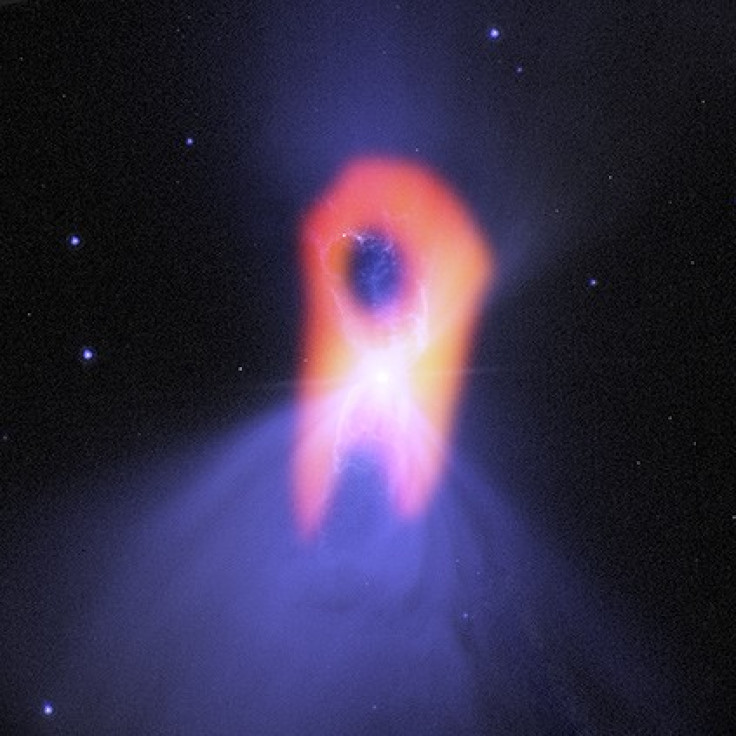Halloween 2013: Nasa Discovers 'Ghost' in 'Coldest Part of the Universe'

Nasa's Alma telescope has discovered a "ghost" in one of the coldest parts of the universe ever surveyed, just ahead of Halloween.
Astronomers found the ghostly celestial object in a part of space where temperatures reach just one degree Kelvin - equivalent to minus 272c.
Named the Boomerang Nebula, it is the coldest known object in the universe and is colder than the faint afterglow of the Big Bang - the natural background temperature of space.
Astronomers using the Atacama Large Millimeter/submillimeter Array (Alma) telescope were looking to find out more about the object, such as its properties and true shape.
It is located 5,000 light years away in the constellation Centaurus and is a young example of a planetary nebula - the end of life phases of stars, such as our Sun. What remains at a planetary nebula's centre is a white dwarf star that emits intense ultraviolet rays that cause the gas to glow in bright colours.
The Boomerang Nebula was first spotted by ground-based telescopes. It initially appeared lopsided, which is where it got its name from.
Published in the Astrophysical Journal, later observations using Alma showed its twin lobes, seen in the image, may be a trick of the light.
Celestial refrigerator
Raghvendra Sahai, lead author and principal scientist at NASA's Jet Propulsion Laboratory, said: "This ultra-cold object is extremely intriguing and we're learning much more about its true nature with Alma. What seemed like a double lobe, or 'boomerang' shape, from Earth-based optical telescopes, is actually a much broader structure that is expanding rapidly into space."
The Boomerang Nebula is in the pre-planetary nebula stage, where the star is not yet hot enough to glow but can be seen by starlight reflecting from its dust grains.
Nasa says the outflow of gas is expanding rapidly and cooling in the process, in the same way a refrigerator produces cold temperatures.
Sahai said: "When astronomers looked at this object in 2003 with Hubble, they saw a very classic 'hourglass' shape. Many planetary nebulae have this same double-lobe appearance, which is the result of streams of high-speed gas being jettisoned from the star. The jets then excavate holes in a surrounding cloud of gas that was ejected by the star even earlier in its lifetime as a red giant."
Observations of the Boomerang by Alma were able to detect this structure, explaining its appearance.
They also showed that the outer edges of the nebula are beginning to warm, even though they are still colder than its cosmic background.
Sahai said their observations are important to the understanding of how stars die: "Using Alma, we were quite literally and figuratively able to shed new light on the death throes of a Sun-like star."
© Copyright IBTimes 2024. All rights reserved.






